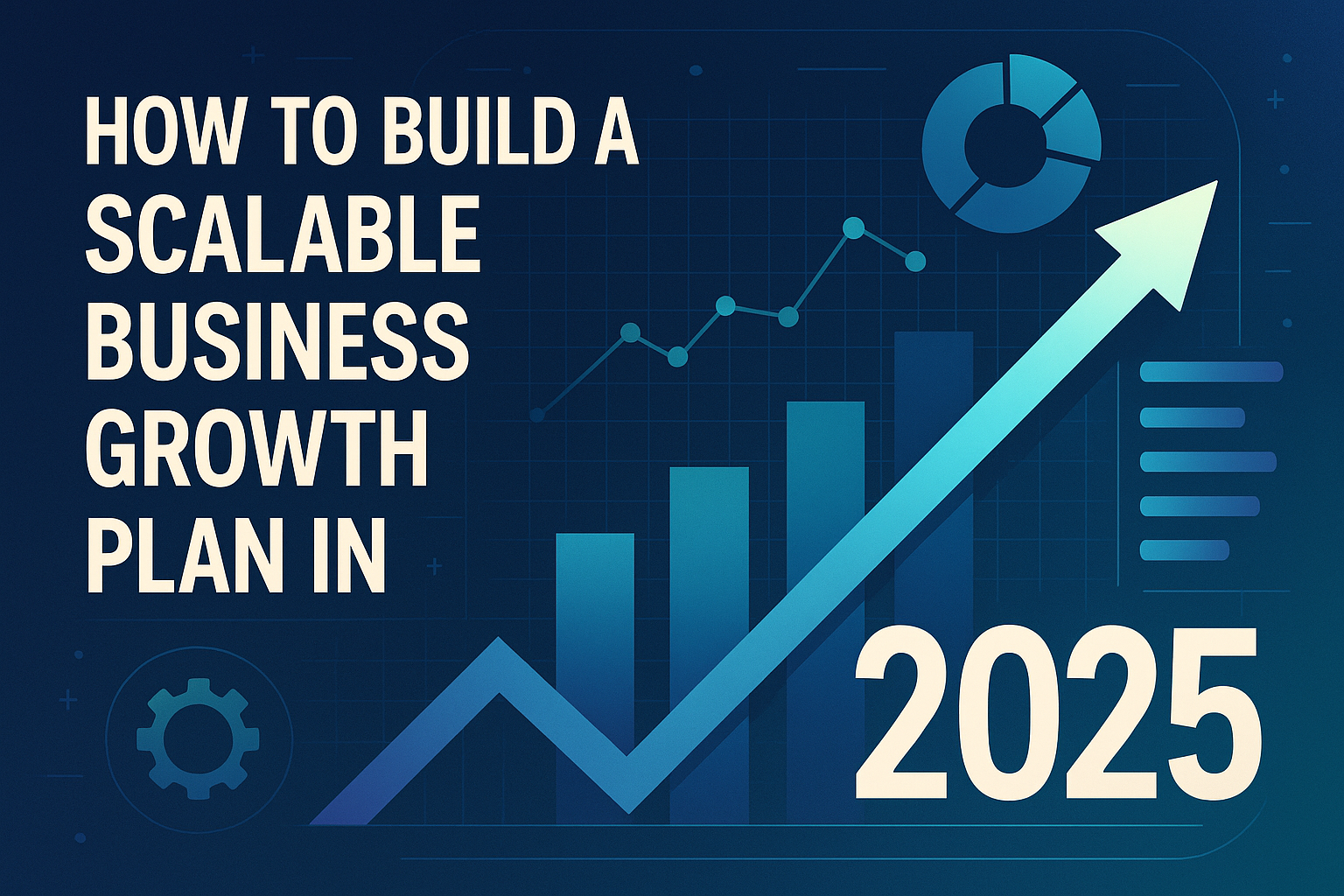In 2025, business growth is no longer just about boosting sales — it’s about creating systems that scale efficiently and sustainably. With fast-changing markets, rising customer expectations, and rapidly evolving technology, businesses must adopt growth strategies that can expand without breaking operations.
To stay competitive, founders and business owners need a scalable growth plan — one that adapts, automates, and accelerates results while maintaining a strong foundation.
This guide covers the key components of a scalable business growth plan for 2025 and how you can start applying them today.
Every successful growth strategy begins with clarity.
Ask yourself:
Where do I want my business to be in the next 3–5 years?
What does measurable growth look like (revenue, clients, reach, team size)?
Once you define your long-term vision, break it down into quarterly or yearly milestones that can scale without relying heavily on manual work or individual team members.
💡 Example:
Instead of “Get more clients,” aim for:
“Acquire 100 new clients per quarter using digital funnels and automation.”
Scalability depends on repeatability. Document and streamline every important business process — from lead generation to service delivery to customer retention.
Recommended tools:
CRM: HubSpot, Zoho CRM
Automation: Zapier, Make
Project Management: ClickUp, Trello, Notion
When your operations are systemized, your business grows without bottlenecks or confusion.
In 2025, guessing is not a strategy.
Track important metrics such as:
Customer Acquisition Cost (CAC)
Customer Lifetime Value (LTV)
Conversion Rates
Churn Rate
ROI across marketing channels
Real-time dashboards help you understand what’s working and where to improve — a key factor in scaling efficiently.
Automation is the foundation of scalable growth. Automating repetitive tasks saves time and helps your team focus on strategy, innovation, and customer experience.
Automation opportunities include:
Marketing funnels (Mailchimp, ActiveCampaign)
AI chatbots for capturing leads
Automated invoicing and reporting
AI-based customer segmentation and personalization
These tools allow your business to grow without increasing operational costs at the same pace.
A business cannot scale on one person’s efforts.
Hire people who complement your strengths and create clear responsibility structures within your team.
Use metrics like:
OKRs
KPIs
to measure performance and keep everyone aligned with your vision.
💡 Tip:
Document every recurring task — it speeds up onboarding and ensures consistency.
Scalable businesses don’t depend on a single product, service, or client.
Explore additional revenue sources like:
Subscription models
Digital products (courses, templates, memberships)
Partnerships and affiliate programs
Tiered service packages
This helps protect your business from market changes and increases long-term growth potential.
Scalability isn’t only about acquiring new customers — it’s about retaining them.
Use automation to deliver personalized experiences at scale:
Send automated thank-you messages
Collect customer feedback
Re-engage inactive users
Satisfied customers become loyal advocates, helping you grow through referrals — the most cost-effective marketing channel.
The business world in 2025 evolves quickly.
Regularly review your:
Strategies
Tools
Systems
Processes
What worked last year may already be outdated today.
Adopt a culture of continuous improvement — test, learn, optimize, and innovate regularly.
A scalable business growth plan isn’t a one-time initiative — it’s a long-term system.
By combining a clear vision, strong processes, data insights, automation, and continuous innovation, you can build a business that grows consistently and sustainably.
Scalability gives you the freedom to expand, innovate, and create long-lasting impact — without chaos or burnout.
 November 12, 2025 - BY Admin
November 12, 2025 - BY Admin